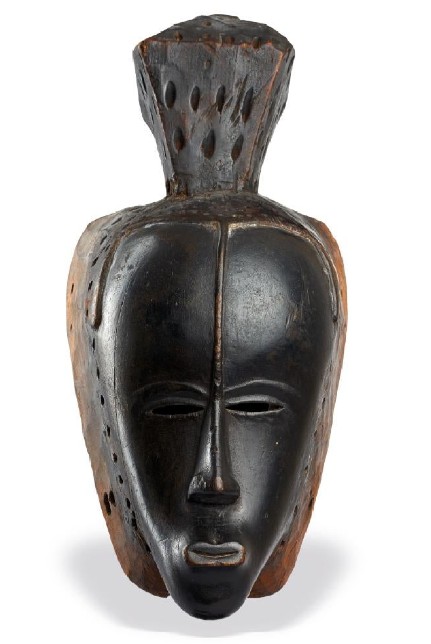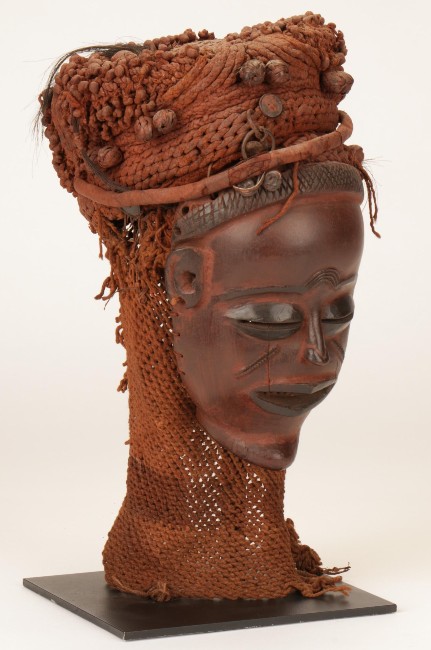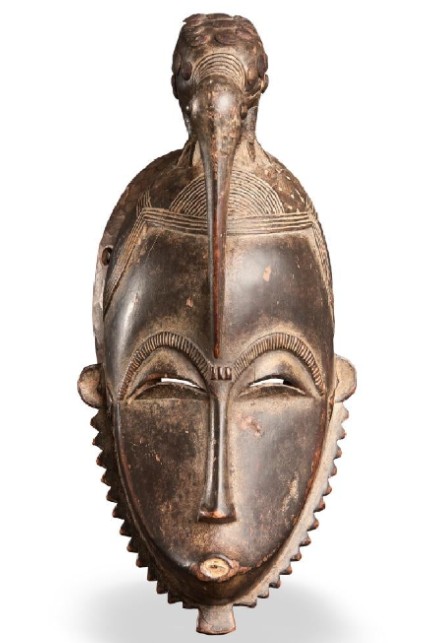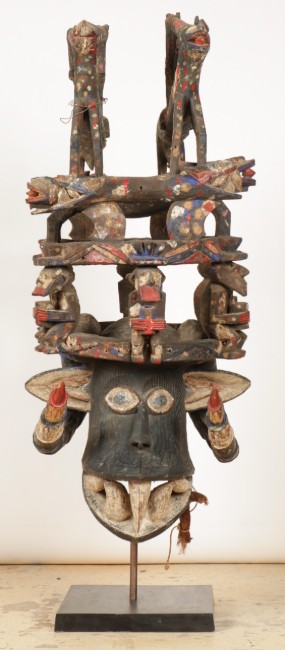
NEW YORK – Tribal masks have been a living tradition in Africa for centuries, having deep social and cultural significance from fertility rituals to honoring the dead. Their striking appearance has captivated Western people since colonial Europeans started making treks to Africa in the 19th century.
These masks have long fascinated many collectors, including noted art dealer Allan Stone, whose African, Oceanic, and Indonesian art collection sold at Sotheby’s New York in 2013. Artists like Pablo Picasso not only collected them but used them to inspire artworks. Contemporary artists continue to make masks. In a 2016 exhibition at the Brooklyn Museum, “Disguise,” 25 artists were connected with historical African masquerade, marrying play and provocation to allow audiences to use them to reshape their world view.

Masks can assume many forms, from crests that rest atop the wearer’s head to helmets and full or partial face coverings, according to the Smithsonian National Museum of African Art. Masks can be imbued with either religious or spiritual significance. The techniques to make them along with the understanding of their symbolism was typically passed down from one generation to another, usually father to son. Mostly made of wood, masks are often decorated with shells, teeth, claws, grasses, feathers, fibers and hairs.
Tribal masks from many different groups across Africa – from the Igbo and Ogoni peoples of Nigeria to fire runner masks from the Ivory Coast – are still widely collected today. George Jevremovic, owner and founder of Material Culture in Philadelphia, said collectors seek masks that are authentic, ones made for ceremonial or ritual use, not ones made for the commercial or touristic markets. “Generally speaking, they look for masks that predate the middle of the 20th Century. Provenance and past ownership are particularly important,” he said.

A longtime aficionado of ethnographic art, Jevremovic became interested in tribal art at an early age at the same time he became interested in fine and folk art. Noting the place masks have in the art world, he said, “African tribal art influenced Western art in significant ways; look at Cubism (Pablo Picasso) and Fauvism (Henri Matisse).”
The market for authentic tribal art is fairly stable, and for the very best examples, prices are strong and in many cases increasing in value, he noted. “Having said that, the market for decorative commercial examples is flooded and the prices are quite low. Knowing the difference between an authentic mask and a ‘good fake’ takes experience and a good eye,” he said.

New collectors should beware of fakes – masks that have been skillfully engineered to give the appearance of age and ceremonial use. When in doubt, seek the advice of a qualified expert in the field. “Read books, visit museums, go to the better galleries and meet the dealers who have spent decades studying and dealing in the art,” he said. “It helps to immerse oneself in the great collections of museums like the Metropolitan Museum in New York.”
The Met indeed has quite a collection, including a striking 19th–mid-20th century face mask (Kpeliye’e) from the Senufo peoples, northern Ivory Coast, that is made of wood, horns, raffia fiber, cotton cloth, feather, metal and sacrificial material. According to the museum’s website, “The feathers and animal horns attached to this example are unusual and may have reflected its owner’s power to counteract negative forces in the community.”

Longtime tribal art specialist John Buxton, who runs ArtTak and Shango Gallery, has several examples of fine African masks on his website, including a Lega mask with beard. “In the forests of the Democratic Republic of the Congo, art is created primarily for semisecret associations of men and women, such as the Bwami society of the Lega peoples,” Buxton said. “Bwami doctrine is represented by wood and ivory masks, heads and small figures, all of which play a vital role during initiation into the society’s highest grades. Although simple in form, these carved objects embody complex and multiple meanings, elaborated through proverbs, skits and dances.”
Powerful objects, imbued with emotion and rich cultural symbolism, African masks make for fascinating collectibles. A display shelf of them can highlight differences in form, color and design and speak to a longstanding tradition.



